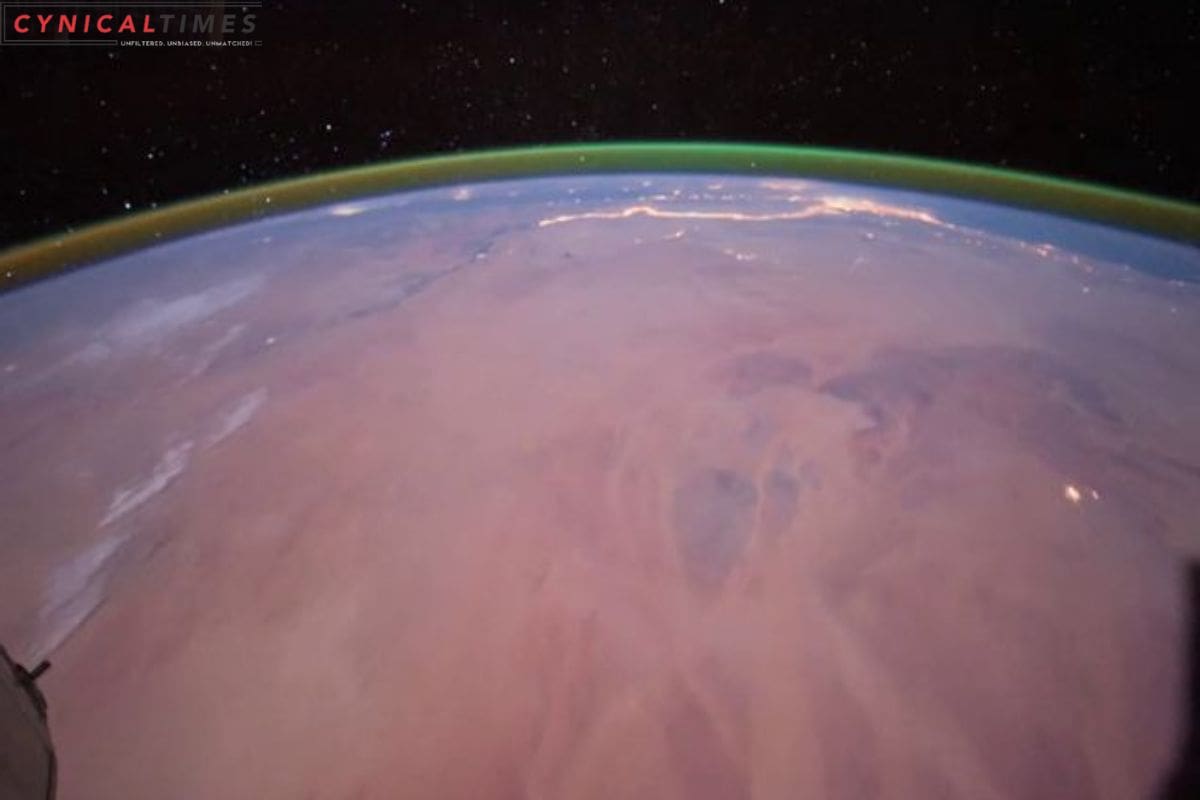Mars Odyssey Orbiter Unveils: In the vast expanse of space, the red planet Mars has long captured the imagination of scientists and space enthusiasts alike. Recently, NASA’s Odyssey orbiter provided a breathtaking view of Mars’ horizon, a perspective that, until now, remained unseen.
This remarkable image was no easy feat. The Odyssey orbiter, equipped with the Thermal Emission Imaging System (THEMIS), typically focuses on mapping the Martian surface. To capture the horizon, scientists orchestrated a complex maneuver, tilting the entire spacecraft 90 degrees to point THEMIS toward the rim of Mars’ horizon.
The process was not without challenges. During the entire orbit required for the image series, the spacecraft’s antenna faced away from Earth, rendering it temporarily out of contact. However, the outcome justified the meticulous efforts.
The panorama depicts Mars’ rugged, crater-covered terrain in the foreground, showcasing the planet’s otherworldly features. Above, Mars’ thin atmosphere is on display, with delicate clouds and dust haze suspended in the alien sky.
As a thermal camera, THEMIS provides valuable data on temperature, offering insights into the composition of Martian clouds. Mars exhibits both water ice and carbon dioxide ice clouds, each holding clues about the planet’s atmospheric dynamics.
In a surprising cameo, Mars’ moon Phobos appears in the image. Phobos, with its mysterious origin, orbits Mars in 7.65 hours, and every observation adds to the ongoing quest to unravel its enigmatic history.
Buoyed by this success, scientists aim to capture additional images of the Martian horizon during different seasons. This ongoing exploration promises to unveil the dynamic nature of Mars’ atmosphere, providing a deeper understanding of the planet’s mysteries
Also Read: NASA Celestial Ballet: Earth’s Enchanting Airglow Dance Caught from Space!
Our Reader’s Queries
Is the Maven mission still active?
The spacecraft is still on its science mission as of September 2020, with all instruments functioning and enough fuel to last until 2030. Shannon Curry took over as the Principal Investigator on August 31, 2021.
Is the 2001 Mars Odyssey still active?
NASA’s Mars Odyssey spacecraft has been orbiting a planet other than Earth since Oct. 24, 2001, making it the longest continually active spacecraft in history. Its primary objective is to study the Martian environment and gather crucial data on potential hazards that may pose a threat to future explorers. With its impressive track record, Mars Odyssey remains a vital asset in NASA’s ongoing efforts to unlock the mysteries of the Red Planet.
What has the Mars Odyssey found?
The 2001 Mars Odyssey has been instrumental in providing a wealth of scientific information. By mapping the chemical elements and minerals that comprise the Martian surface, it has enabled us to gain a better understanding of its composition. Additionally, the discovery of vast amounts of water ice in the polar regions, just beneath the surface, was made possible through the mapping of hydrogen distribution. These findings have been invaluable in advancing our knowledge of Mars and its potential for supporting life.
What information we got from Mangalyaan?
India’s Mars orbiter, Mangalyaan, made history by observing the red planet from 2014 to 2022. This mission was a significant milestone for India, showcasing the country’s technological advancements in exploring the inner solar system. Mangalyaan’s success has inspired people all over India, as it was the country’s first mission to another planet.

